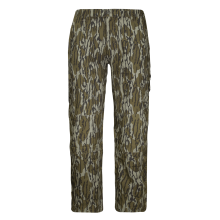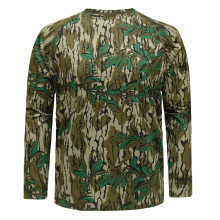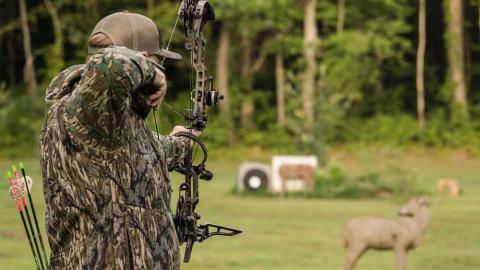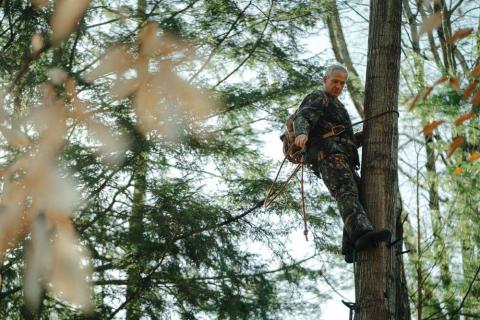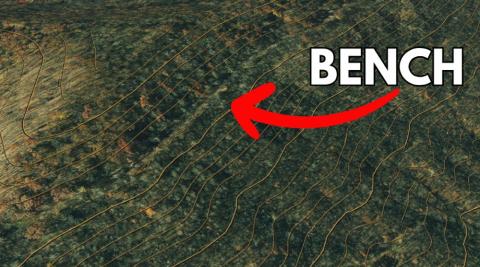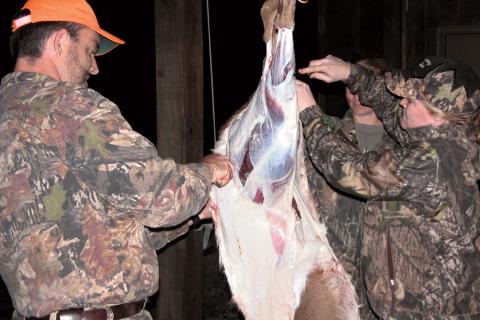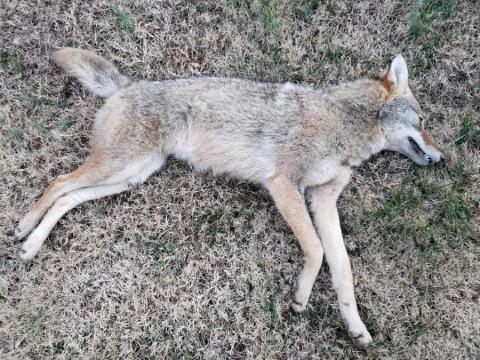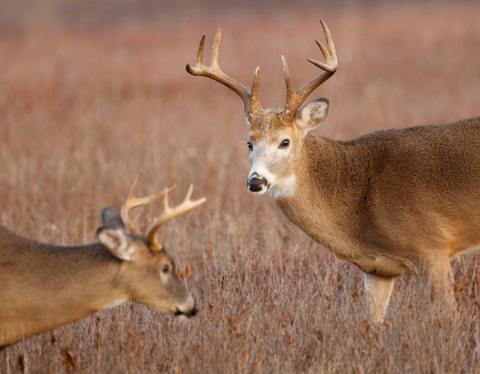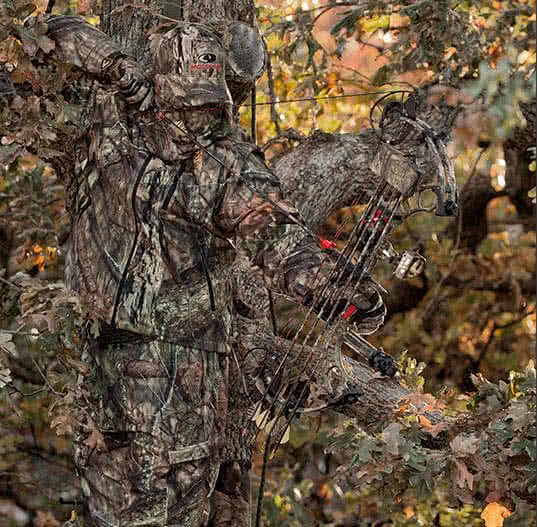By Heath Wood
With fall hunting seasons just around the corner, May is the perfect time to fine-tune your archery setup. Whether you're planning to pursue bugling bulls in the Rockies or chase whitetails in Midwest timber, your arrow build plays an important role in ensuring clean, ethical kills. A well-balanced arrow can make the difference between a successful harvest and a frustrating tracking job. The flight of a well-released arrow can feel almost magical to a bowhunter.
I can recall many moments from past archery hunts when I harvested an animal, but what continues to amaze me is how vividly I can still picture the arrow's flight in my mind, even years later.
For Native Americans, arrows were not only tools for hunting and protection but also symbols of life and spirit. For them, the perfect arrow flight symbolized the essence of life. I often get a bit of that Ted Nugent vibe when I feel the majestic flight of an arrow. For example, on a past hunt in Missouri, I can vividly recall the buck as he first appeared at the edge of the small CRP field I was hunting. From the moment I saw him, it seemed like everything went into slow motion. He gracefully jumped over the barbed wire fence, and with his landing, it felt as though every other deer in the field knew he was there. As he made his way to the tree I was in, I came to full draw. Soon, the buck turned, giving me a perfect broadside shot. After gently squeezing the trigger of my release, it was as if I could see the arrow arching its way into the vitals, yet it felt like I could see the vanes slowly spinning in mid-flight. The buck ran seventy-five yards before crashing. One of the most remarkable experiences from that hunt was coming upon the expired buck. As I walked up to him, my arrow lay beside the buck, as if someone had gently placed it beside him and said, ‘Here you go.’ What a spirit-filled hunt that only a bowhunter can experience.
To achieve ideal arrow flight, there are four key components to consider: broadhead selection, arrow spine, FOC (Front of Center), and total arrow weight. When tailored for elk and deer hunting, the hunter experiences what perfect arrow flight should feel like and the rewarding results that follow.

Broadhead Selection: Fixed vs. Mechanical
Your broadhead is the most essential part of your arrow, and choosing the right one is crucial. Just like with a rifle, the same bullet used for deer isn’t always suitable for hunting elk. The same principle applies to broadheads; one designed for elk isn’t necessarily the same as one for deer.
For Elk
Elk are big, tough animals with thick hides, heavy bones, and massive muscle groups. Penetration is everything. For this reason, fixed-blade broadheads, especially 3-blade or 4-blade models, are the go-to for many elk hunters. Popular choices include the Iron Will, Magnus Stinger, and the G5 Montec M3. These heads are known for their durability and deep penetration.
• Pros: Reliable, durable, and low failure rate
• Cons: Require careful tuning and may catch more wind
For Whitetails
Whitetails are smaller-bodied, more agile animals. You can afford to prioritize cutting diameter for greater blood trails. Mechanical broadheads, like the Rage Hypodermic, SEVR Titanium 2.0, or the New Archery Products DK4, are great options here, as long as your setup has sufficient kinetic energy.
• Pros: Larger wound channels, often better blood trails
• Cons: Potential for failure on bone hits or marginal shots
The bottom line is to use fixed blades for big-bodied elk that are harder to take down, and to consider mechanicals for deer to achieve better blood trails and quicker recovery times. The week after I shot my buck with the unique arrow experience, I recall switching broadheads to a SEVR mechanical broadhead. Although I was satisfied with my broadhead and the results from the previous week, I wanted to achieve a stronger blood trail with the next deer. This is important because in the area where I hunt, if a deer runs in a different direction, it could result in a much more difficult recovery due to the steep river bottom landscape that drastically changes throughout the property. Sure enough, that next weekend, I was able to shoot a doe from the same treestand. More blood was dispelled, and less recovery time was achieved; mission accomplished. Whatever setup you choose, ensure your bow setup can support the broadhead’s requirements.
Arrow Spine: The Backbone of Your Shot
Arrow spine refers to how much your arrow flexes when shot. A properly spined arrow ensures consistent flight, accuracy, and proper energy transfer upon impact. When choosing broadheads, a hunter shouldn’t just grab any arrow and head out to hunt. Different arrows are made explicitly for the game you’re hunting, and for good reasons.
For Elk
A heavier draw weight (usually 60–75 pounds) paired with a fixed-blade broadhead requires a stiffer spine. Arrow spines with a diameter of 300 to 340 are generally ideal for elk hunting, especially when paired with heavy inserts and high FOC setups. Similarly, when choosing a broadhead, you want the hardest-hitting setup to take down large-bodied elk.
For Deer
If you're shooting a lower draw weight (40–60 lbs) or using a lighter overall arrow, you can use a 350 to 400 spine arrow. These will fly more efficiently with lighter broadheads and lower FOC builds. Always paper tune your arrows to select the right ones.
FOC (Front of Center): Balance and Penetration

FOC refers to the forward weight distribution of your arrow. A higher FOC leads to better penetration and a more stable flight, but it’s important to maintain a balance.
Elk Arrows
Aim for 13–16% FOC. This level provides good stability and bone-busting power without causing erratic flight. You may need heavier inserts (e.g., 50–100 grains) and a heavy broadhead (125–150 grains) to reach this range.
Deer Arrows
An FOC between 10–13% is usually sufficient. You don’t need as much front-loading to penetrate a deer’s vitals. Moderate FOC also allows for better arrow speed and a flatter trajectory.
Use online FOC calculators to fine-tune your builds. Consistency matters more than maxing out the number.
Total Arrow Weight: Energy vs. Speed
Finding the right balance between arrow weight and speed is key. Too light, and you risk insufficient penetration. Too heavy, and your trajectory flattens, making yardage misjudgments more costly.
Elk Arrows
Shoot for 450–550 grains total weight. This gives you solid kinetic energy (60–75 ft-lbs) and momentum to drive through bone and muscle.
Deer Arrows
A total weight of 375–450 grains is typically plenty. It allows for flatter shooting at longer ranges and ample penetration, especially with mechanical heads. Remember, heavy arrows absorb more energy, which also reduces vibration and bow noise, something elk hunters especially appreciate during close encounters.
Read More: Developing a Summer Practice Routine with Your Bow
Build for the Hunt You’re Doing

There’s no one-size-fits-all arrow. Elk require toughness, penetration, and consistency. I have fallen into the YouTube hole many times while watching videos about proper arrow builds and specifically setting up arrows and broadheads for deer or elk. The one thing I have gained from watching hours of how-to videos and through numerous trials and errors with my own setups is that whitetails demand speed, accuracy, and efficient energy transfer. As you build your arrows this spring, consider the game you’re pursuing, watch and read for yourself, and then adjust your components accordingly.
After building your arrows this spring, and as fall approaches, taking time to ensure your bow setup is dialed in can make all the difference. Confirm that your arrow spine aligns with your draw weight and broadhead choice, and take the time to tune your arrows for consistent, accurate flight. Select broadheads that are suitable for the game you’re pursuing and test your entire setup at various distances under realistic conditions. Preparing now means confidence in the moment of truth.













